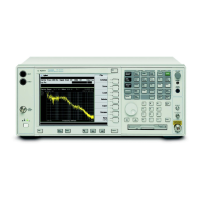Converting Data Formats
As mentioned, the data in a synthesis table may be in pole-zero, pole-residue,
or polynomial format. You can convert from one data format to another.
In pole-residue tables, the 1s^0 residue term appears when you convert an
empty table (interpreted as H(s) =1) to the pole-residue format. This term
simply adds a “1” to the synthesis equation. An s^n term is called a Laurent
term. Laurent terms cannot be edited on the synthesis table. If you do not
need to use the 1s^0 residue term, clear the table.
In a polynomial table, the default 1s^0 term appears when you convert and
empty table to the polynomial format. These terms simply put a “1” in both
the numerator and denominator of the synthesis equation. If you don’t need to
use the default 1s^0 terms, clear the table.
Avoid converting tables unnecessarily. Table conversions are not exact
because of finite precision (64-bit) in the math operations. It may not always
be possible to convert from one representation to another and back, without
resulting in slight variations.
The numeric range for tables is full IEEE 64-bit double precision. The display
of numbers only handles floats.
When you synthesize a function with infinite gain at dc (such as K/S
2
)and
place a zero in the DC bin, the marker reads NaN, which means “Not a
Number.”
The message “Not Hermitian” is displayed if coefficients from Pole Residue or
Polynomial synthesis-tables are in a table when table format conversion is
attempted. The analyzer’s curve fitter will not work with a non-Hermitian
frequency-response trace (because it is not possible for real-world systems to
be non-Hermitian).
Agilent 35670A
Operator's Guide Synthesis Option 1D3
15-13
